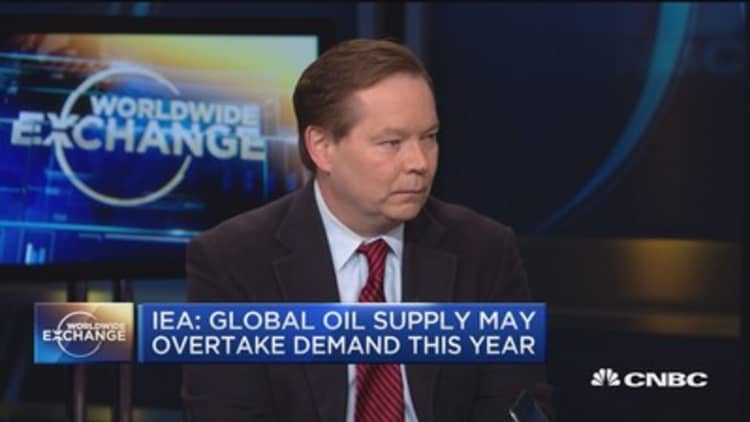
Big oil-producing nations have nearly achieved their goal of draining a prolonged oil glut after taking some bitter medicine: cutting the crude production that funds their governments.
But with victory in sight, U.S. drillers are poised to spoil OPEC's plans for the second time in three years.
On Tuesday, the International Energy Agency warned that surging U.S. production could delay OPEC's bid to balance the long-oversupplied oil market. It's another sign that the 14-member cartel will have to adjust to a market whose ups and downs are increasingly influenced by U.S. shale oil.
The IEA's warning came in the latest monthly report from the Paris-based advisor to energy producers — the first it has issued since U.S. government data showed America's oil output topped 10 million barrels a day in November, roughly matching the all-time record set in 1970.
"Today, having cut costs dramatically, U.S. producers are enjoying a second wave of growth so extraordinary that in 2018 their increase in liquids production could equal global demand growth," IEA said Tuesday.
In other words, U.S. production could climb enough this year to satisfy the 1.4 million additional barrels a day that IEA forecasts the world will consume in 2018.
"This is a sobering thought for other producers currently sitting on shut-in production capacity and facing a renewed challenge to their market share," IEA said.
To be sure, OPEC has put up some big wins in the past two years. The producer group convinced Russia and several other nations to contribute to a historic deal to cut oil output by 1.8 million barrels a day. Along with stronger-than-anticipated growth in oil demand, that deal has shrunk global stockpiles of crude oil and boosted prices.
OPEC's official goal is to drive down inventories to the five-year average. At the start of last year, they were 264 million barrels above that level, according to IEA. Now, they are just 52 million barrels higher than OPEC's target.

"With the surplus having shrunk so dramatically, the success of the output agreement might be close to hand," IEA said on Tuesday.
"This, however, is not necessarily the case: oil price rises have come to a halt and gone into reverse, and, according to our supply/demand balance, so might the decline in oil stocks, at least in the early part of this year."
IEA says a lot can change in a few months, but if stockpiles do start rising again, the United States would be the main culprit.
OPEC itself warned Monday that it might not achieve its goal until the end of 2018. In its own monthly report, the cartel hiked its forecast for supply growth from non-OPEC producers, mostly due to resurgent U.S. output.
History repeating itself
Now, IEA warns that history might be repeating itself.
The U.S. shale oil revolution — fueled by new technology that allows drillers to squeeze oil and gas from shale rock — was a major contributor to the 2014 oil price collapse.
OPEC, led by top exporter Saudi Arabia, initially responded to the downturn by refusing to cut production, a strategy that it historically used to drain oversupply. The Saudis wagered that low oil prices would flush high-cost U.S. drillers out of the market, setting up a recovery as the shale revolution ground to a halt.
While dozens of American energy companies filed for bankruptcy, OPEC's new policy didn't break the industry. U.S. shale producers survived by drilling more efficiently, securing discounts from service companies and slashing headcounts.
Ultimately, many shale drillers proved they could keep pumping with oil prices below $50 a barrel, forcing OPEC to reach a deal with Russia and other producers at the end of 2016 to cut output. They twice extended the agreement, which is set to expire at the end of this year.
On Monday, OPEC Secretary-General Mohammed Barkindo told CNBC the cartel is seeking to institutionalize the agreement and continue coordinating policy even after it achieves its goal. He also said he had assurances from President Vladimir Putin that Russia will stick to the deal.
Market watchers are wary of Russia's commitment, especially as U.S. crude oil exports have surged to record highs, threatening to erode Moscow's grip on key demand centers like China.
IEA notes that a shipment of U.S. condensate, a super light oil blended with heavier crude, recently arrived in the United Arab Emirates.
"Such a development would have seemed incredible a few years ago, now it looks like the shape of things to come," the agency said.


